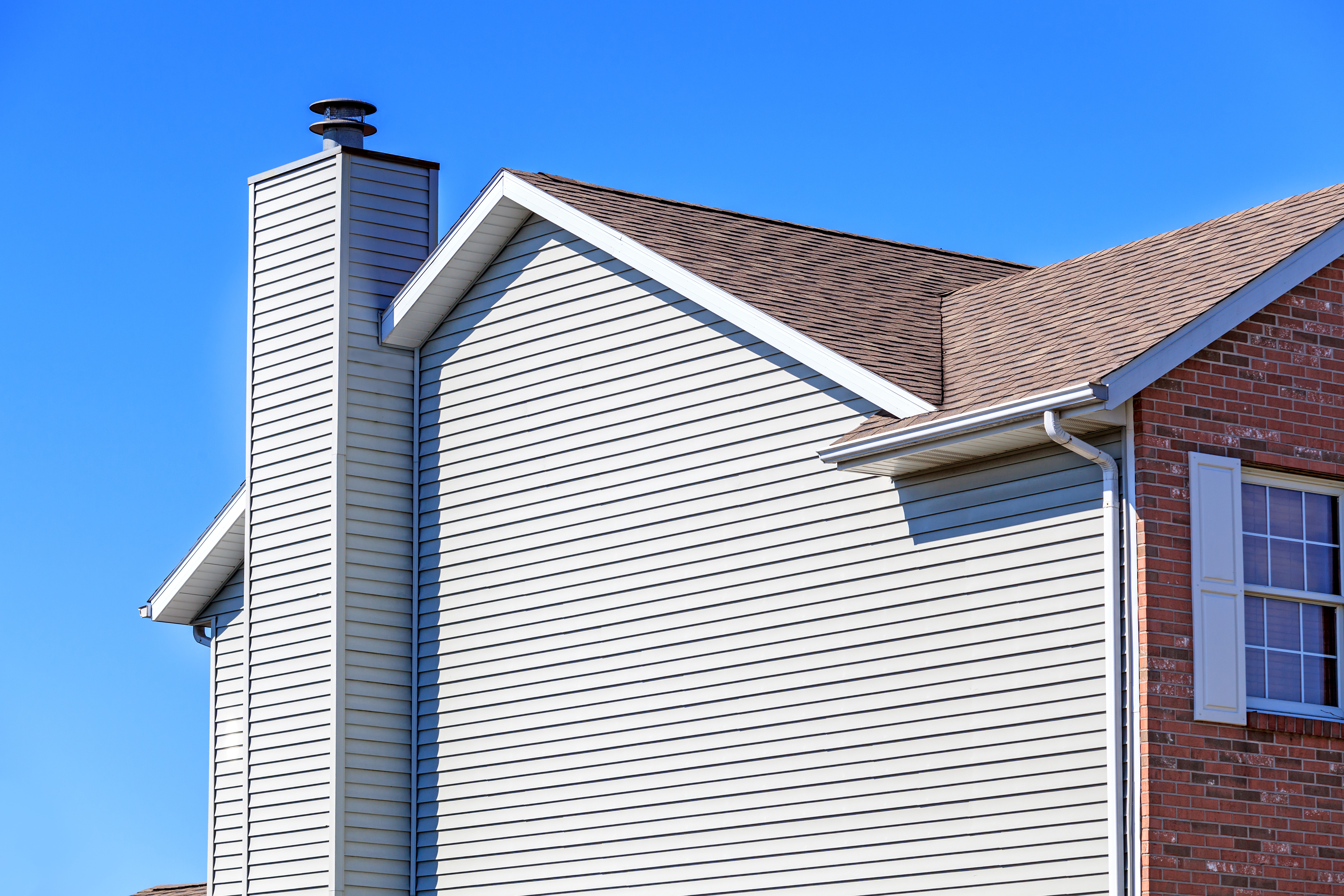
In addition to protecting against extreme Midwest temperatures, new siding in Columbus adds curb appeal. Learn about siding replacement cost in Columbus.
Living with mold in your siding can be harmful to everyone in your home


Spotting mold in any area of your home can add a lot of stress to your plate. Dealing with mold growth on your siding can be an unsightly and potentially harmful problem. Not only can it diminish the overall appearance of your home, but it can also pose health risks to you and your family.
In this comprehensive guide, we will walk you through the step-by-step process of how to remove mold from siding. With the right tools, supplies, and techniques, you'll be able to restore the beauty of your home's exterior and create a healthier living environment.
Before you embark on the task of removing mold from your siding, here ere are a few key points to consider before getting started:
Assess the severity: Take a close look at the mold growth on your siding. Determine the extent of the problem and whether it's a surface-level issue or if it has penetrated deeper into the siding material. This assessment will help you determine the appropriate approach for removal or if you need to budget for siding replacement costs instead.
Take safety precautions: Mold can release spores that may cause respiratory issues, so it's crucial to prioritize your safety. Wear protective gear, including gloves, goggles, and a mask, to prevent direct contact and inhalation of mold particles during the removal process.
Contact a pro to diagnose any potential damage to your home's siding, as they may be able to identify damage that is difficult to spot.

Before you begin the mold removal process, it's important to assess the extent of the mold growth on your siding. Walk around your home and carefully inspect the siding, looking for any visible signs of mold or mildew—you also want to remove mildew from siding when you find it. Pay close attention to areas that are prone to moisture, such as shaded spots, areas near gutters or downspouts, and places where water tends to accumulate and cause water damage.
Take note of the affected areas and determine the best course of action for removing the mold.
You also need to clean the area around the siding you’ll be working on removing mold from before you can kick off. Clear any objects or furniture near the siding to provide easy access and prevent any potential damage. If you have plants or landscaping close to the affected siding, cover them with plastic sheets or tarps to protect them from the cleaning solution.
Don’t forget to ensure proper ventilation by opening windows or using fans to allow fresh air to circulate during the siding cleaning process.
Mold can release spores that can be harmful when inhaled or come into contact with the skin. To protect yourself, it's crucial to wear appropriate protective gear. Put on disposable gloves to shield your hands from direct contact with mold and cleaning agents. Wear goggles to protect your eyes from splashes or airborne mold spores.
You may also want to consider using a mask or respirator to prevent inhaling mold spores while working on the siding.
Selecting the right cleaning solution is crucial for effectively removing mold from siding and making mistakes while cleaning the mold. There are several options you can consider, depending on your preference and the severity of the mold growth.
A simple mixture of water and detergent can be effective for mild cases of mold. Vinegar, which has natural antifungal properties, is another option. Hydrogen peroxide is a stronger solution that can tackle moderate mold growth. Alternatively, you can use a commercial mold cleaner specifically formulated for siding.

Before applying the cleaning solution to the entire affected area, it's essential to test it on a small, inconspicuous spot of the siding. Apply a small amount of the solution to the test area and wait for a few minutes. Check for any discoloration, damage, or adverse reactions. If there are no negative effects, you can proceed with confidence.
If you notice any adverse reactions, try a different cleaning solution or consult a professional for further guidance.
To make the mold removal process more effective, it's recommended to pre-soak the siding. Begin by wetting the entire affected area with clean water. This step helps to loosen the mold and makes it easier to scrub away during the cleaning process. Use a garden hose or a pressure washer on a gentle setting to thoroughly wet the siding, focusing on the moldy areas.
With the siding pre-soaked, it's time to start scrubbing the moldy areas. Use a scrub brush or sponge soaked in the chosen cleaning solution to scrub the mold away. Work in sections, starting from the top and working your way down. Apply the cleaning solution to the brush or sponge and vigorously scrub the moldy spots, using firm but controlled pressure. Pay extra attention to stubborn areas or deep-seated mold stains.

After scrubbing, it's crucial to rinse the siding thoroughly to remove any residual cleaning solution and loosened mold. Use a garden hose or a pressure washer on a gentle setting to rinse off the siding. Start from the top and work your way down, ensuring that all the cleaning solution and mold debris are thoroughly flushed away.
Pay attention to any nooks, corners, or crevices where mold might still be present.
In some cases, particularly if the mold growth is extensive or stubborn, you may need to repeat the cleaning process to ensure complete mold removal. If you notice any remaining mold stains or discoloration after the initial cleaning, go through the steps again. Apply the cleaning solution, scrub the affected areas, and rinse thoroughly until the mold is completely gone.
Be patient and thorough to achieve the desired results. Killing mold involves killing the spores, so if you see mold continuously pop up, that means your DIY cleaning efforts aren’t getting deep enough, and it may be time to bring in a professional.
After completing the cleaning process, allow the siding to air dry completely. Inspect the siding for any remaining mold spots or discoloration. Proper drying is crucial to prevent mold from regrowing. Ensure that the area is well-ventilated to aid in the drying process. Avoid direct sunlight, as it can cause the siding to dry too quickly and potentially lead to damage. Once the siding is thoroughly dry, you can assess the results of your mold removal efforts.
Mold can greatly impact your family’s health, so if you're unsure about any aspect or the mold growth appears extensive, it's always wise to consult with a mold removal professional near you for guidance and assistance. It is generally more expensive to hire an expert (the national average cost of mold remediation is around $2,200) for this project than buying supplies and doing it yourself, but it is a project that needs to be done properly to ensure your home is safe to live in.
From average costs to expert advice, get all the answers you need to get your job done.

In addition to protecting against extreme Midwest temperatures, new siding in Columbus adds curb appeal. Learn about siding replacement cost in Columbus.

Fiber cement siding is durable, fire-resistant, and affordable. Learn more about fiber cement installation costs in Columbus, OH.

The cost of siding repair varies depending on material, design, and damage. This helpful guide covers the siding repair costs to expect in Columbus, Ohio.

One afternoon of bad weather can leave your aluminum siding with dents, scratches, and holes. Learn how you can repair aluminum siding in a few short hours.

On the hunt for sturdy, stylish, and sustainable siding for your home? From modern to historic houses, fiber cement is a popular option for good reason.

When you need to reface your home, a low-maintenance siding option can last longer, keep more money in your pocket, and keep your home better protected.